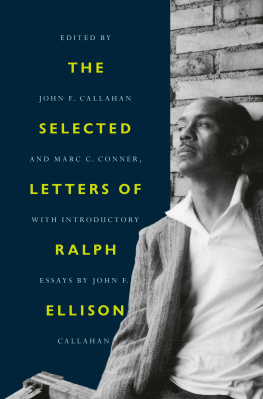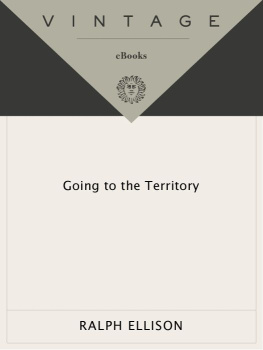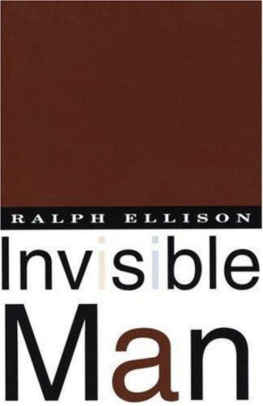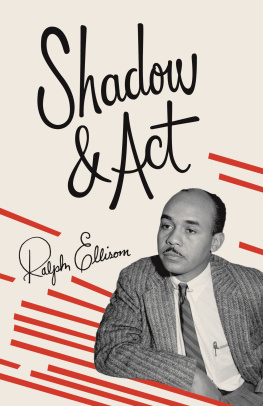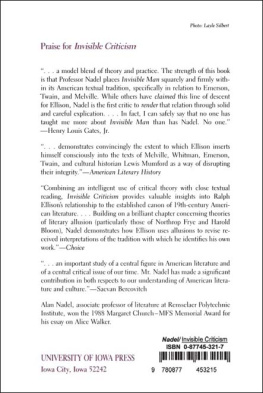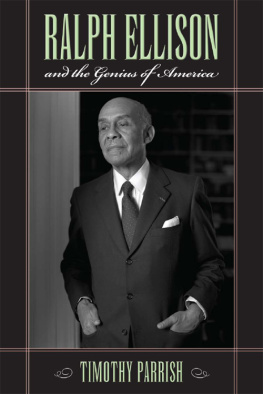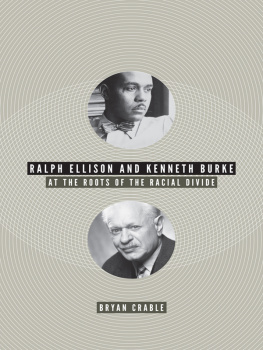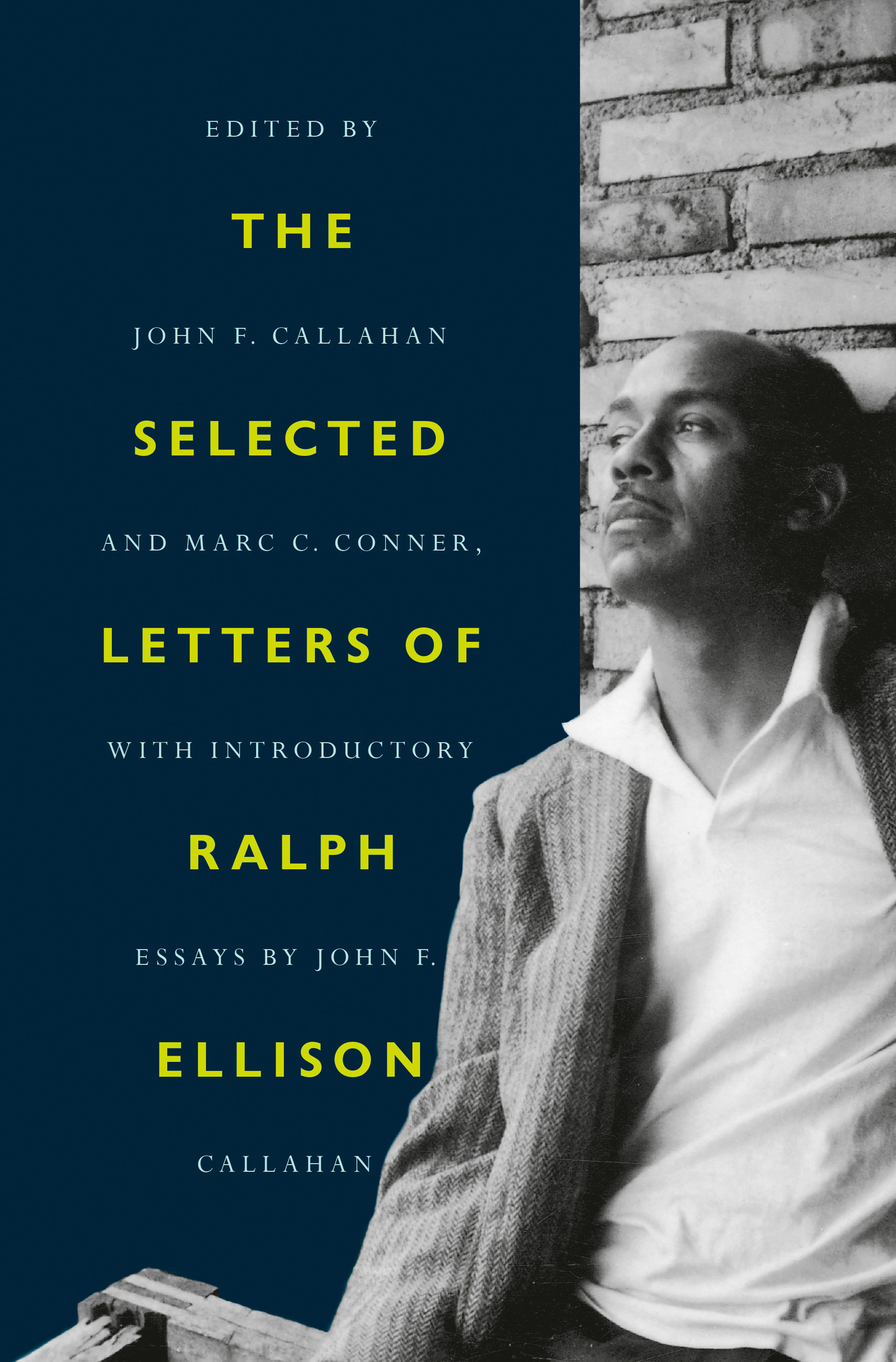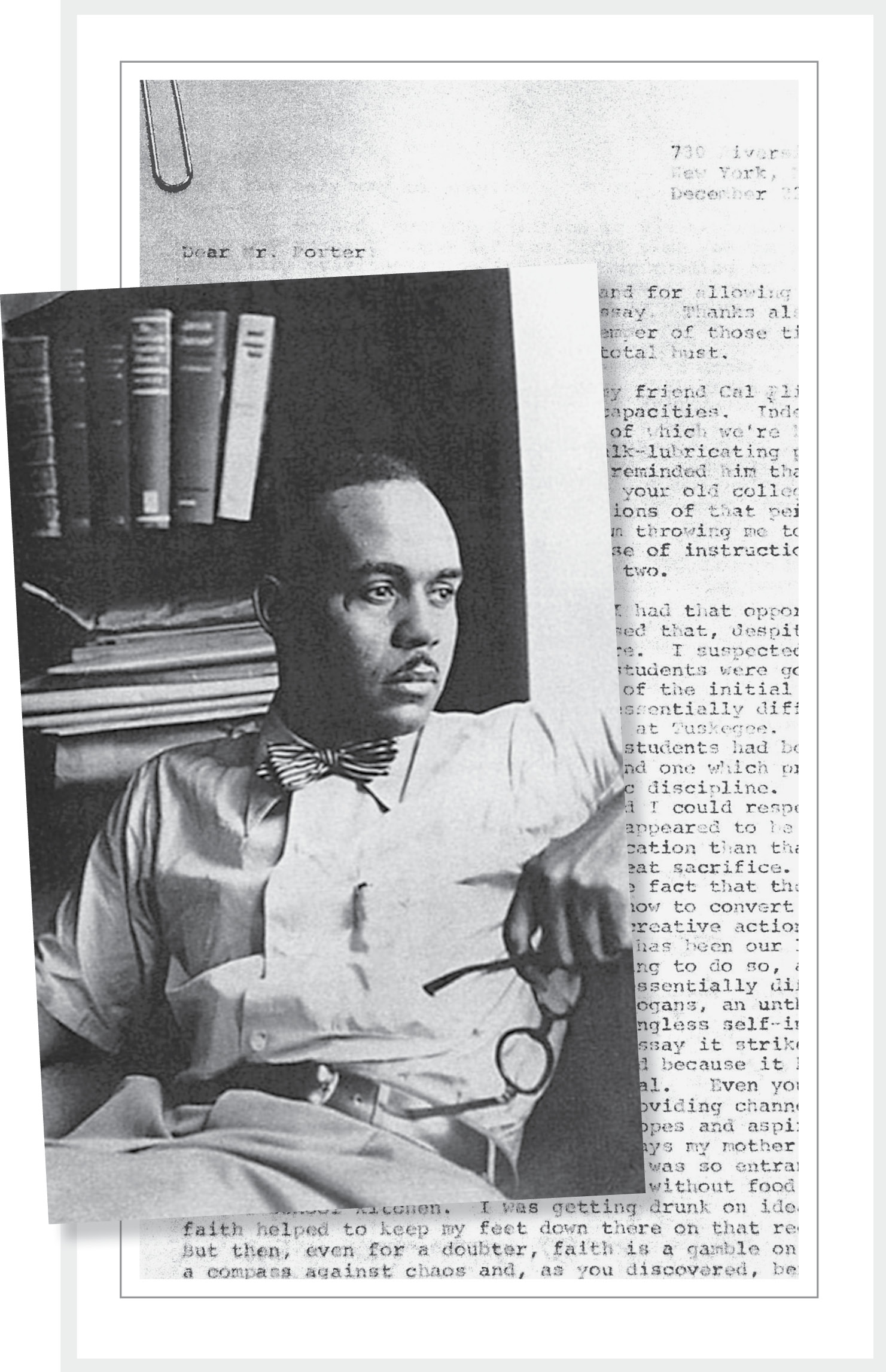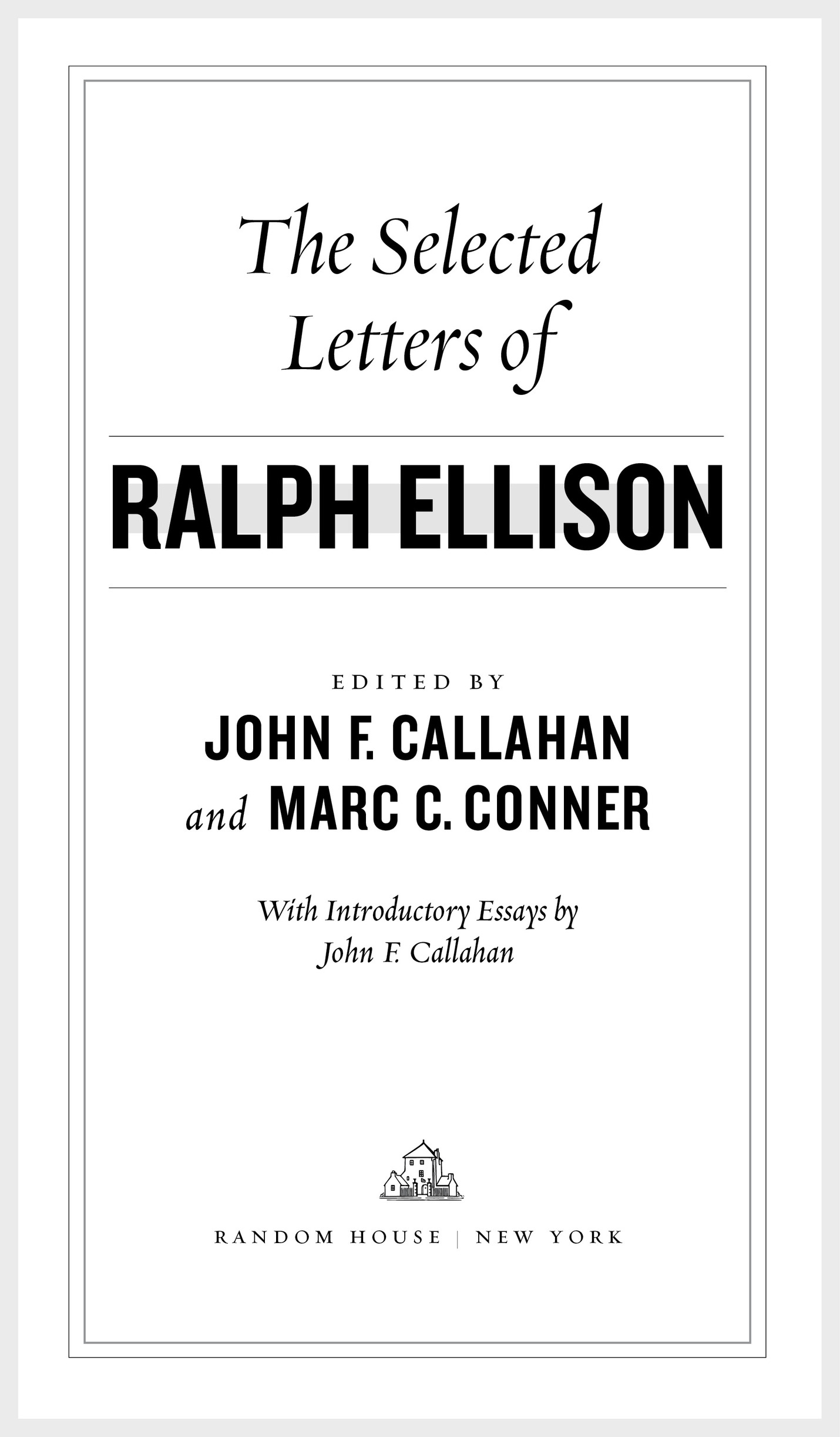Introductions copyright 2019 by John F. Callahan
All rights reserved.
Published in the United States by Random House, an imprint and division of Penguin Random House LLC, New York.
R ANDOM H OUSE and colophon are registered trademarks of Penguin Random House LLC.
General Introduction
R ALPH ELLISONS LIFE COMES CLOSE to spanning the twentieth century, though as the years go by he casts a glance back to the Civil War and Reconstruction of the nineteenth century and ahead to the fast-approaching digital age of the twenty-first. Born in 1913, about five and a half years after Oklahoma was admitted to the Union, he lost his father, a protective companion, at the age of three. Raised by his mother, Ida, with rigorous love, Ellison grew up in the mostly nurturing, close black community of the vibrant Deep Deuce section of Oklahoma City during the Jim Crow era. His story is an African American variation of the American dream. Long after leaving Oklahoma City, this young man from the provinces, who became a sophisticated man of the world, remembers when I lay on a pallet in the moon-drenched kitchen door and listened and dreamed of the time when I would leave and see the world (letter to Albert Murray, July 24, 1953).
Written over six decades, Ellisons letters range from boyhood notes to his mother to detailed exchangesand sometimes trenchant sparring matches over ideaswith some of the most distinguished figures of American intellectual and literary life: Richard Wright, Kenneth Burke, Stanley Edgar Hyman, Albert Murray, Saul Bellow, Romare Bearden, Robert Penn Warren, Richard Wilbur, Harold Bloom, Hugh Kenner. Equally important, and perhaps sometimes more so for what they reveal about his private self and boyhood experience, are letters to old friends and relations from Oklahoma City, that frontier dream world of his childhood to which Ellison returned with increasing frequency: Virgil Branam, Jimmy Stewart, Camille and Mamie Rhone, Charles Etta Tucker, Hester Holloway, H.B.O. Hoolie Davis. Perhaps sensing that he might not live to write a formal autobiography, in the last years of his life Ellison wrote more and more letters that record memories of the people, places, and events of his early years in Oklahoma and what that experience continued to mean in his life and work.
Between March 1933 and June 1993, Ellison wrote letters to an expanding and expansive company of individuals. Even in the parochial Dear Mama letters he writes from Tuskegee, we see glimmers of the defiant, lyrical mind whose observations discern fluid changes in American life, society, and personality over the next sixty years. In fact, personality fascinated Ellison so completely that he dared assume the stance of bystander as well as participanta dual perspective that infuses some of the letters with a feel of both biography and autobiography.
Consider two letters, each from the rich trove of the 1950s, that stake out Ellisons quest as a person, citizen, and writer. After hearing a radio bulletin announce the 1954 Brown v. Board of Education decision, Ellison is wet-eyed as he reflects on what is ahead now that integration is the law of the land: Well, so now the judges have found and Negroes must be individuals. He ends this remarkable letter, Anyway, heres to integration, the only integration that counts: that of the personalitya profound toast hailing individual personal integration (letter to Morteza Sprague, May 19, 1954). For Ellison, the Supreme Courts ruling goes hand in hand with the challenge faced by each citizen, each person, to create an integrated selfan arduous task that, decade by decade, threads its way through his letters.
In another letter written not long after publication of Invisible Man, he regrets that he has lost the delight of corresponding, a harrowing condition since there was a time when I was more myself when writing a letter than at any other time (letter to Richard Wright, January 21, 1953). Rather than accept loss of delight as a chronic affliction, Ellison gives his correspondence an even more central place in his thinking, feeling, and writing life than was the case in the lead-up to and immediate aftermath of Invisible Man.
Considered as a whole, Ellisons letters tell his story on several levels. Biographically, the correspondence tells of his metamorphosis from an impressionable, ambitious outsider into an articulate, accomplished denizen of Harlem who, while making a mark in New York, nevertheless sustains fierce allegiance to his Oklahoma roots. Artistically, the letters follow his changes from a down-and-out, former aspiring symphonic composer into a writer, then a first-rate contemporary novelist, and finally a man of letters whose embrace of American complexity leads to a defiant patriotism bred of his need to affirm while resisting (letter to John Callahan, August 12, 1983). Personally, he wrote Time on November 27, 1958, more than a year after his return to the United States from Rome, to correct its mischaracterization of him as a Negro writer in exile, I am too vindictively American, too full of hate for the hateful aspects of this country, and too possessed by the things I love here to be too long away. Undoubtedly read by millions of Americans, his letter expresses the double delight of someone able to both master and express the only integration that counts: that of the personality.
THE LETTERS OF RALPH ELLISON testify to the fluidity and change he sees in American life and society, as well as in himself and his relationships. Perhaps the first things to strike a reader coming for the first time to Ellisons correspondence are its remarkable longevity and the fascinating variety of people he wrote to over those sixty years in the intimate form of the letter. Decade by decade, year by year, Ellison unfolds his lifelong ambition and anxiety, confidence and uncertainty, anger and serenityand most of all, perhaps, a quality of intensity that became vivid in his painterly observations of the natural and social terrain around him during his daily comings and goings.
Three weeks after his twentieth birthday, Ellison writes the first letter in this volume to his mother from the State Training School for Negro Boys in Boley, an all-black town founded before Oklahoma became a state. A fetching self-deprecation presages the humor peppered through the letters: Im Mr. Ellison out here and I forget to answer sometimes.
The 1930s produce a series of letters, many deeply personal, that mark young Ellisons growth from a dependent young man to a fiercely independent writer-to-be. From June 1933 to May 1936 his letters are written by hand at Tuskegee Institute in rural Alabama. Almost all are to his mother, Ida; a few others are to his younger brother, Herbert, and his stepfather, John Bell; and an ambiguous one is to Vivian Steveson, his old flame from Oklahoma City. The impoverished young man writing Dear Mama from Tuskegee is sometimes a lonesome college student viscerally aware of his mothers sacrifices, at other times a self-absorbed trumpet player whose secret wish is to write a symphony by the age of twenty-six, like Richard Wagner. In July 1936, after his junior year, he goes to New York to earn money for his senior year while shaking free of a manipulative, abusive dean at Tuskegee.

